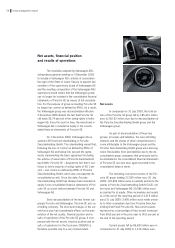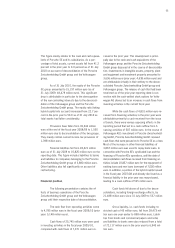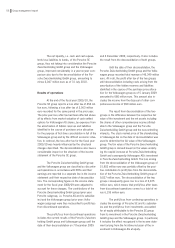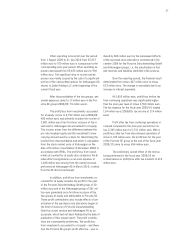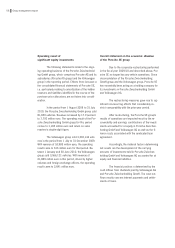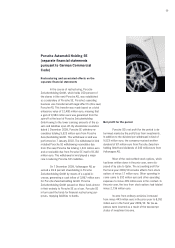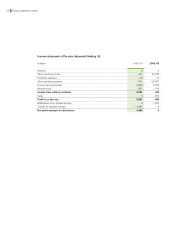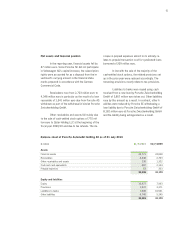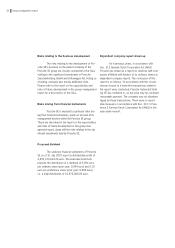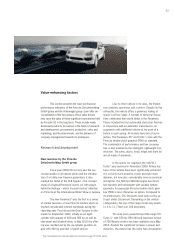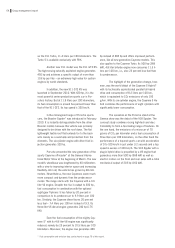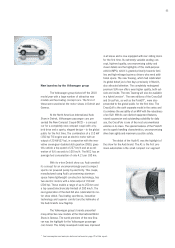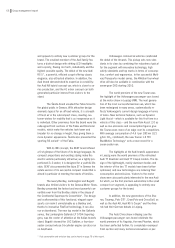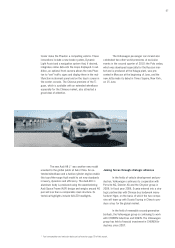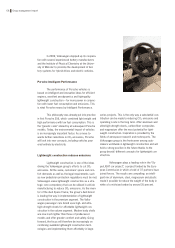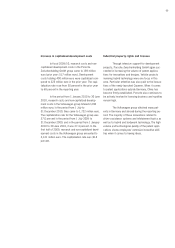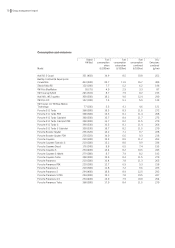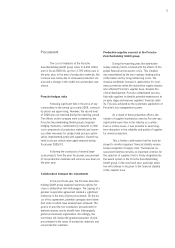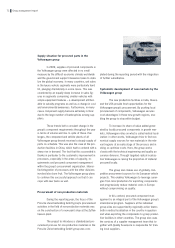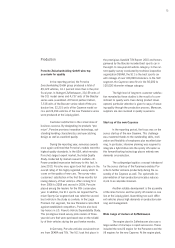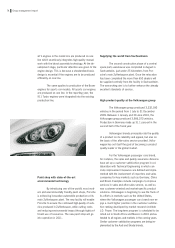Porsche 2009 Annual Report Download - page 64
Download and view the complete annual report
Please find page 64 of the 2009 Porsche annual report below. You can navigate through the pages in the report by either clicking on the pages listed below, or by using the keyword search tool below to find specific information within the annual report.
as the 911 Turbo, 11.4 liters per 100 kilometers. The
Turbo S is available exclusively with PDK.
Another new 911 model was the 911 GT3 RS.
The high-revving naturally aspirated engine generates
450 hp and achieves a specific output of more than
118 hp per liter – an extremely high value for suction
engines by world standards.
In addition, the new 911 GT2 RS was
launched in September 2010. With 620 hp, it is the
most powerful series-production sports car in Por-
sche’s history. But at 11.9 liters per 100 kilometers,
its fuel consumption is around five percent lower than
that of the 911 GT2. Its top speed is 330 km/h.
In the mid-engined range of Porsche sports
cars, the Boxster Spyder* was introduced in February
2010. It is instantly distinguishable from the other
Boxster models because this vehicle was primarily
designed to be driven with the roof down. The flat
lightweight textile roof that extends far to the back
acts merely as a sunshade and protection from the
elements. The six-cylinder engine with direct fuel in-
jection generates 320 hp.
Porsche presented the new generation of the
sporty Cayenne off-roader* at the Geneva Interna-
tional Motor Show at the beginning of March. The new
model’s wheelbase was lengthened by 40 millimeters
with a view to improving interior space and increasing
flexibility. All in all, the vehicle has grown by 48 milli-
meters. Nevertheless, the new Cayennes seem much
more compact and dynamic than the predecessor
model. The range starts with the Cayenne with a 3.6
liter V6 engine. Despite the rise in output to 300 hp,
fuel consumption in combination with the optional
eight-gear Tiptronic S has fallen by 20 percent in
comparison to its predecessor to 9.9 liters per 100
km. Similarly, the Cayenne diesel burns 20 percent
less fuel – 7.4 liters per 100 km instead of 9.3. Its
three-liter V6 diesel engine generates 240 hp (176
kW).
Even the fuel consumption of the mighty Cay-
enne S* with its 4.8 liter V8 engine was significantly
reduced, namely by 23 percent to 10.5 liters per 100
kilometers. Moreover, the engine now generates 400
hp instead of 385 hp and offers improved perform-
ance, like all new generation Cayenne models. This
also applies to the Cayenne Turbo. Its 500 hp (368
kW), 4.8 liter bi-turbo engine now consumes 11.5 li-
ters per 100 km, i.e., also 23 percent less fuel than
its predecessor.
The highlight of the generation change, how-
ever, was the world debut of the Cayenne S Hybrid*
with its technically sophisticated parallel full hybrid
drive and consumption of 8.2 liters per 100 km,
which is equivalent to CO2 emissions of only 193
g/km. With its six-cylinder engine, the Cayenne S Hy-
brid combines the performance of eight cylinders with
significantly lower consumption.
The sensation at the Porsche stand at the
Geneva show was the debut of the 918 Spyder. The
concept study combines racing high-tech and elec-
tromobility to form a fascinating range of features. On
the one hand, the emissions of a microcar of 70
grams of CO2 per kilometer and a fuel consumption of
three liters per 100 kilometers, on the other hand the
performance of a top-end sports car with acceleration
of 0 to 100 km/h in just under 3.2 seconds and a top
speed in excess of 320 km/h. The 918 Spyder with a
plug-in hybrid drive is propelled by a V8 engine that
generates more than 500 hp (368 kW) as well as
electric motors on the front and rear axles with a total
mechanical output of 218 hp (160 kW).
* Fuel consumption and emission data can be found on page 70 of this report.
64 Group management report


